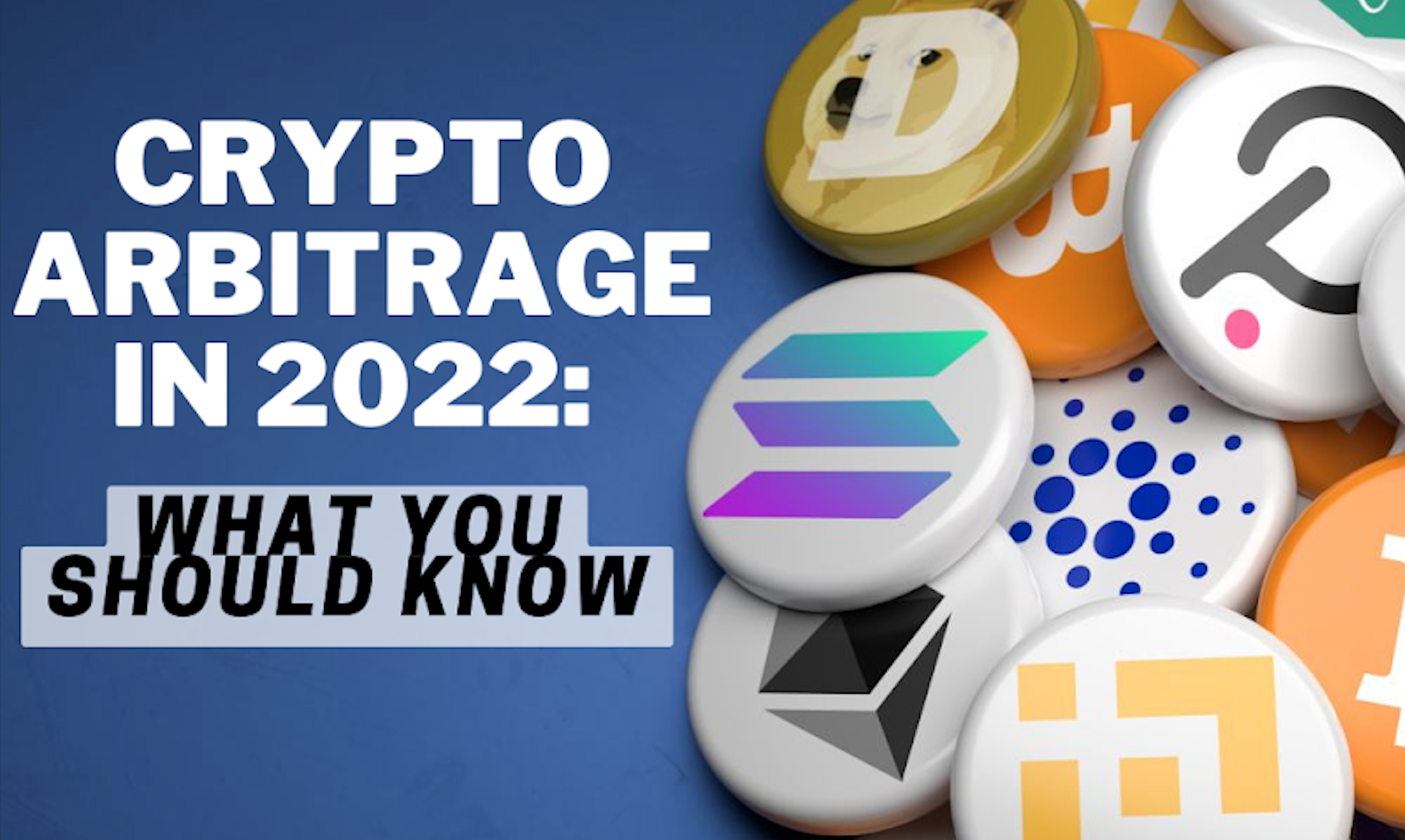
Cryptocurrencies have positioned themselves as a powerful innovation. And over the years, many profitable opportunities have emerged from them, increasing their popularity and adoption.
Today, over 8000 crypto assets are in the market, trading on multiple exchanges. The price discrepancies on these assets on each exchange have presented an opportunity known as Crypto Arbitrage. While cryptocurrencies are volatile in prices, such volatility is an advantage in crypto arbitrage.
What is Crypto Arbitrage?
Crypto arbitrage is a form of cryptocurrency trading. It simply involves leveraging the price differences of an asset on different exchange platforms for profit.
The most common trading strategy is buying an asset on an exchange and selling it on the same when a profit has been made. However, crypto arbitrage allows traders to buy on one exchange and sell on another due to a notable deviation in price. For example, if Bitcoin trades at $30,000 on Binance and $30,100 on Kucoin, an $100 arbitrage opportunity is available in such a scenario. Ripple is also one of the good options to trade as its low price is more affordable in line with the XRP chart AUD. You can start trading right now using any crypto trading platform. One of the more convenient for Australian users is the TimeX platform.
Yet, crypto arbitrage is not as easy as buying on one exchange and selling on another. Just like the usual crypto trading, crypto arbitrage comes with risks that traders must be aware of before venturing into it.
How Does Crypto Arbitrage Work?
Arbitrage is common in every financial market and is not native to cryptocurrency. The practice is age-long, especially in traditional markets like stocks, bonds, and commodities. For instance, a stock’s price on the New York Stock Exchange might vary on Tokyo State Exchange.
Crypto arbitrage takes the same form, with cryptocurrency as the primary asset. Traders exploit the price differences— also known as spread—on crypto assets to their advantage. However, they usually have to be timely because the price discrepancy may not last long. A delay in selling off the asset at a higher price on the other exchange could result in an unexpected loss.
Apart from the volatility of cryptocurrencies, other factors are usually responsible for arbitrage opportunities traders capitalize on. An exchange with low fees, higher trading volume, and liquidity usually have lower crypto prices.
Another thing to note is that most exchanges price a cryptocurrency based on the most recent trade, which could be either a buy or sell order. A savvy crypto arbitrageur will study these metrics to position himself for a profitable trade.
Types of Crypto Arbitrage
Within crypto arbitrage, there are various types of opportunities available. Types of crypto arbitrage include;
Cross-exchange Arbitrage: This is the most basic form of arbitrage trading, where a trader attempts to earn by purchasing cryptocurrency on one exchange and selling it on another at higher prices.
Spatial Arbitrage: Another type of cross-exchange arbitrage trading is spatial arbitrage. The main difference is that the exchanges are spread out across the country. Using the geographical arbitrage strategy, you may profit from the difference in bitcoin demand and supply in America and South Korea, for example.
Triangular Arbitrage: This is the process of rotating funds between three or more digital assets on a single exchange to profit from a price difference between one or two cryptocurrencies. A trader can, for example, set up a trading cycle that starts with bitcoin and finishes with bitcoin.
A typical example of triangular arbitrage could be an exchange of Bitcoin for Ether, followed by a trade from Ether to XRP. A last trade from XRP to Bitcoin completes the cycle. Usually, if there are discrepancies in prices across the three trading pairs, a trader would end up with more bitcoin than he began with. Thus, he can sell to gain profits on his initial investment. On the other hand, a negative price difference would lead to having less bitcoin, with an accruing loss when sold.
Statistical Arbitrage:
Traders that employ this arbitrage strategy frequently use statistical models and trading bots to perform high-frequency arbitrage trades and optimize profit. Trading bots are computer-assisted trading systems that execute many deals in a short amount of time using pre-programmed trading strategies.
Decentralized Arbitrage
This arbitrage opportunity is widespread on decentralized exchanges or automated market makers (AMMs), which use automated and decentralized programs called smart contracts to discover the price of crypto trading pairs.
Arbitrage traders can leverage and execute cross-exchange transactions between the decentralized exchange and a centralized exchange if the prices of crypto trading pairs on the former differ significantly from their spot prices on centralized exchanges.
Is Crypto Arbitrage Legal?
Generally, crypto arbitrage is not an unlawful practice. While there are no express laws guiding the crypto arbitrage, some local laws require traders to pay taxes off their crypto gains, including filling out a crypto investment report, which they can use to calculate taxes. Moreover, arbitrage allows market efficiency for cryptocurrency.
Why is Crypto Arbitrage Considered a Low-risk Strategy?
The risk exposure to crypto arbitrage is low compared to other crypto trading strategies. Trading strategies like day trading require traders to predict an uptrend on an asset, which may lead to losses if the prediction goes wrong.
Crypto arbitrage is different as traders do not need to analyze the market. They spot opportunities that are executed within seconds or a few minutes. Nevertheless, crypto arbitrage has peculiar risks.
Crypto Arbitrage Risks
The cryptocurrency market is volatile, and there are risks peculiar to each investment and trading strategy, including crypto arbitrage. What are the risks involved when conducting arbitrage trades? These risks could significantly impact a trader’s chances of profiting from a trade. They include;
Fees
When conducting cross-exchange arbitrage, traders have to consider trading, withdrawal, and deposit fees, which may impact expected profits on the trade.
Arbitrage traders can avoid this risk by limiting their trades to exchanges with competitive fees. Moreover, they can also engage in triangular arbitrage trading, which involves conducting trades within an exchange.
Volume
The more a cryptocurrency’s trading volume, the greater its liquidity, which increases the likelihood of trades being executed.
Slippage
When you enter or exit a trade, a trader might get a different price than expected. This is known as price slippage. And this is common with decentralized arbitrage. As a result, rigorous market research and excellent market timing become critical components of arbitrage trading.
Security
Arbitrage traders are vulnerable to security concerns linked with exchange hacks and exit scams since they must deposit large sums of money in exchange wallets. Exit scams occur when a crypto exchange abruptly ceases operations and vanishes with traders’ funds. Thus, it’s good to do your homework and stick to trustworthy crypto exchanges.
Conclusion
Arbitrage is one of the several opportunities available in the crypto market. However, it is regarded as a low-risk trading strategy. Arbitrage traders can also capitalize on bots to automate the whole process.
from Trading Strategies – My Blog https://ift.tt/4vcYJ5R
via IFTTT



No comments:
Post a Comment